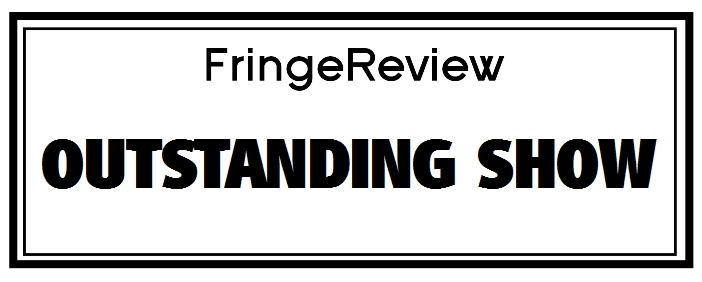FringeReview Scotland 2023
Another Nice Mess
The Southside Group

Genre: Community Theatre, Drama, New Writing, Theatre
Venue: The Tramway Theatre
Festival: FringeReview Scotland
Low Down
The Laurel and Hardy fan club on the southside of Glasgow meet in a bombed out cinema in the early post war years. In 1947, their heroes are due to visit the city after having done so before the war. Having got Glasgow, and many of the rest of the UK through the war with their films, they are over to say hello and bring good cheer. That is needed as the Laurel and Hardy fan club face the possibility of being evicted due to the intentions of the owners of the cinema, the dastardly Lord Bannatynes. Their plan to build the first multi-level park for motor vehicles can only be beaten if the cashless club can raise £150 to buy the building. Stan Laurel, having lived in the city before, has a clear affinity to Glasgow, however the last time he visited his precious pocket watch was nicked. He is offering a £150 reward for its recovery. Meanwhile having just got out of the orphanage, one young lad is in search of his mother who was forced to give him up as she was young when she had him, and her husband had died of tuberculosis. The only connection between them, a pocket watch given to him by his dying father which he has kept … now a stalwart of the Laurel and Hardy fan club, that self-same mother welcomes the new young lad, desperate to join and, well I think we might begin to work out what kind of happy ending is in sight…
Review
As a piece of theatre this worked on so many levels, and I think you need to judge this on two of those – artistically and as a context for the development of the performers. Let me take the last, first.
This is a learning disabled theatre company, led by non-disabled artistic directors. With support onstage from one of the artistic directors and from others who are not learning disabled, this brought structure to allow the cast to flourish. Never condescending or attempting to steal the limelight, it had a subtlety which was nuanced. Although we did have a structure led by a non-disabled person, it was done with care, which allied to the gentle nudge here, the support for lines there and proxemics, it just worked. You could see the performers shining because the confidence they had was all about them being able to get the laughs and deliver the pathos.
But it is a theatre piece in a theatre and on that it has to be placed in its context on merit. This is one of the best pieces of theatre I have seen for some time. As a piece of theatre, it engaged all the trickery it could muster as well as making sure we got the personalities and the beauty of performing for an audience. That audience, full for the first night, rose from their seats at the end, not just because they have seen these actors develop over time and know the struggles they have faced as they have been alongside them, but also because they saw a shining example of how art can develop and support, enhance and promote, give and take the work and show it off with such deft skill.
Performances were superb. There were a few duff lines and fluffs with entrances, in fact I could count one of each, so there were hardly any… There were, however, wonderful little cameos, not least with working the audience, which was beautifully done, but it was the strength of the collective that shone. Nobody was being left behind and even those with the least confidence and who had the least to do had the floor cleared for their opportunities. The direction was spot on. Theatrically it allowed the script to build, and both the tones being used, and the pace was immaculately observed. Short scenes were used to match their abilities, whilst small interludes to allow for plot exposition through using the silent screen and the early film genre was spot on as a delivery model for each plot development.
The use of the projections showed just how much care was being put into this piece. This was not about delivering something which will do – this was about hitting the artistic heights. Using old Laurel and Hardy movie clips, setting the scene in post war Glasgow, the way in which individual bows were given on screen then a collective one at the end was perfect.
There were so many gems – the audience watching the film at the beginning, some of the solo spots, the work with the audience, the searching in the Glasgow underworld, the emergence of a new film star in the photography studio, and so much more.
The script was not a challenging piece of writing for the audience, but it was subtly pitched for the cast. The use of melodrama was apt and appropriate as the cast know how to exploit it to its fullest extent, and technically all of the supports, from the set, the atmospheric lighting and the soundtrack were spot on.
In the shadow of the latest CAST awards which did highlight the work of disabled artists, this would rank up there in terms of both process and performance – for disabled arts to thrive and flourish it needs depth. It needs more and not less. This is just a perfect example of why.


















































